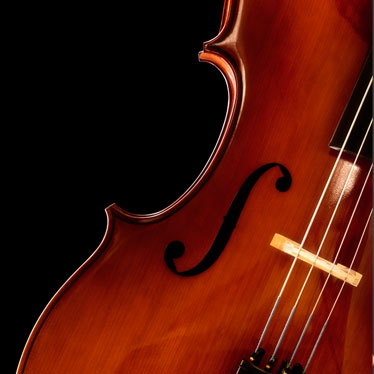3 Ways to Improve Your Violin Tone

For violin beginners, one of the most difficult aspects to control is being able to produce consistent tone. Unlike intonation, which refers to correct finger placement, tone refers to the quality of the sound your violin is capable of creating. Because the violin is an organic string instrument, crafted from specific woods and constructed using specific methods, the quality of the student violin you play has a big impact on the sound you’ll be able to coax from it.
However, the quality of your violin is only one aspect that contributes to tone. Other factors such as your violin bow and performance mechanics, as well as the type of violin strings you use and the instrument set up play a key role in the sound that you can produce.
This list of methods and tips offers violin beginners practical ways to improve their tone, which enables better progress and advancement. Essentially, when student musicians can play music that sounds like they want it to or how it should, they’ll feel more encouragement to continue learning.
Violin Construction
The way your student violin has been constructed—and how the parts interact—will influence the tone that you’re able to produce. The more responsive the instrument, the better the tone. However, that doesn’t necessarily mean the most expensive.
Violins that have poor projection or low resonance will require you to work twice as hard to make music, but simply won’t have the “room” to create all the tonal colors you want. For this type of problem, you may want to look at exchanging your violin for another. However, before you chuck your current instrument, see if the problem can be addressed through an expert set-up. Many times an extreme change in climate conditions will negatively affect the tone of your violin.
Set-up Process
Almost regardless of the violin’s quality—almost, because materials do effect it—the set up process has an extremely significant impact on how easy or difficult it is to improve your tone. The set up process is conducted by a luthier (artisan string instrument maker). It involves the exact positioning of the bridge, soundpost, and other tonal factors such as the length of the tailpiece hanger (the little piece of gut, wire, or nylon cord that connects the tailpiece to the end peg) and the height of the nut (the ridge at the end of the fingerboard); all of which contribute to the responsiveness of each violin string to the bow.
Moreover, the strings themselves play a key role in creating great tone. Choose violin strings that work with your instrument. Many violin beginners and intermediate players prefer perlon (synthetic nylon) for their ability to withstand temperature and humidity changes, and for the rich, warm, lustrous sound they produce. A great set that’s recommended for a student violin is Thomastik-Infeld’s Alphayue Strings, which cost around $20.
When a quality violin is in perfect condition, the lightest touch should start it singing. If you’ve been struggling with your tone, have noticed an alignment issue, frequently need to tune your strings, or can almost sense that your violin isn’t in complete accord, have your local violin repairer take a look.
Exercises
For violin beginners, most tone problems are created by the bowing hand and bowing technique, and they can be grouped into three areas:
- Choosing the right combination of bow weight and speed (the pressure you place with your bow hand—your best sound is very close to a scratch, so don’t be afraid of increasing your pressure)
- Maintaining the correct sounding point on the proper string plane (ensuring that you are playing each string halfway between the bridge and the fingerboard—approximately aligned with the top of the f-holes)
- Learning to draw a straight bow (keeping the bow exactly parallel with bridge)
For each of these areas, violin beginners should practice appropriate exercises to overcome tone difficulties. In fact there are many free online videos that demonstrate straight bow, placement, and violin bow weight exercises.
Professor at Yehudi Menuhin School and the Guildhall School of Music, violin pedagogue Simon Fisher has developed and written three instructional books and is a regular contributor to The Strad magazine. Recently, he released an instructional video course that includes speed, pressure, and soundpoint exercises designed to help violinists improve their tone. The four-hour DVD, entitled “The Secrets of Tone Production,” offers violinists of all levels the effective practice insights and tips of this noted instructor.
For violin beginners, improving your tone doesn’t have to be an overwhelming challenge, and the good news is that all of the factors that contribute to your violin’s tone can be improved. It’s simply a matter of certifying that your violin is of good quality, ensuring that it’s been set up correctly and maintained, and mastering the mechanics of the instrument.

